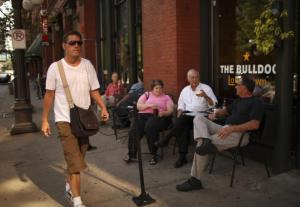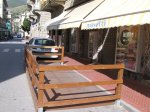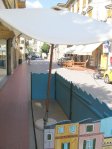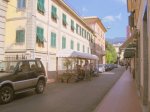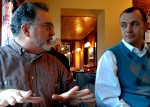See pages 2-3 of the August 13, 2013 Northfield City Council meeting minutes. It includes these 8 recommendations:
1. Increasing enforcement and maintaining markings of existing parking regulations: City Staff has already begun enforcing duration and location regulations and improving paint and signage of existing parking spaces.
2. Reducing parking time limits for some parking to create pick-up/drop-off spaces: City Council and Staff are ready to begin an “experiment” with15 minute pick-up/drop-off spaces and City Engineering, in consultation with the Police Department, has developed a map of 13 proposed locations.
3. Reviewing and upgrading directional and way-finding signs to public parking: City Staff has conducted an inventory from the entrances to the community to the public parking locations and identified signage enhancement opportunities, stressing consistency in internationally-recognized symbols.
4. Providing parking which “safely accommodate[s] users of all ages and abilities” (Northfield Complete Streets Policy); parking near popular destinations should reflect the abilities of those most likely to use it: City Staff is considering possible locations and specifications for this type of parking.
5. Supporting community-wide education initiatives as recommended by the 2008 Nonmotorized Transportation Task Force Report for sharing the “rules of the road” with all modes of transportation by collaborating with schools, local government, police, non-profits and for-profits utilizing multiple media and events.
6. Reducing speeds and/or improving design safety on key downtown corridors of Highway 3 and Division Street: The City will formally engage the State regarding the 3rd Street intersection of Highway 3. City Staff has begun exploring the 3rd Street and 6th Street intersections of Division Street.
7. Tailoring parking regulations and locations for different parking purposes including employees, short trips, and out-of-town visitors. Council adopts policy with input from stakeholders including the Chamber, the CVB, the EDA, the NDDC, and programmers.
8. Improving bicycle and pedestrian accommodation to help reduce demand for automobile parking in accordance with the Comprehensive Plan by (a) continuing to implement adopted policies including bike lanes, routes and trails (identified in the Parks, Open Space and Trail Plan), (b) integrating new projects such as the TIGER Trail at entrances to the downtown, and (c) reducing barriers to bicycle/pedestrian access and circulation downtown by broadly considering possible longer term or larger scale improvements.










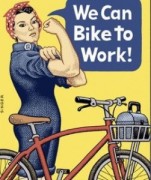 NDDC is going to meet with another stakeholder group, bicycle commuters, next week.
NDDC is going to meet with another stakeholder group, bicycle commuters, next week.







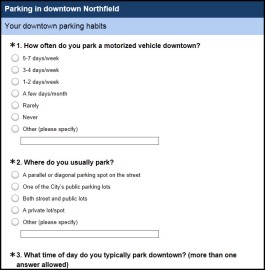
 I’ve done a few things to start getting the word out about this project:
I’ve done a few things to start getting the word out about this project: